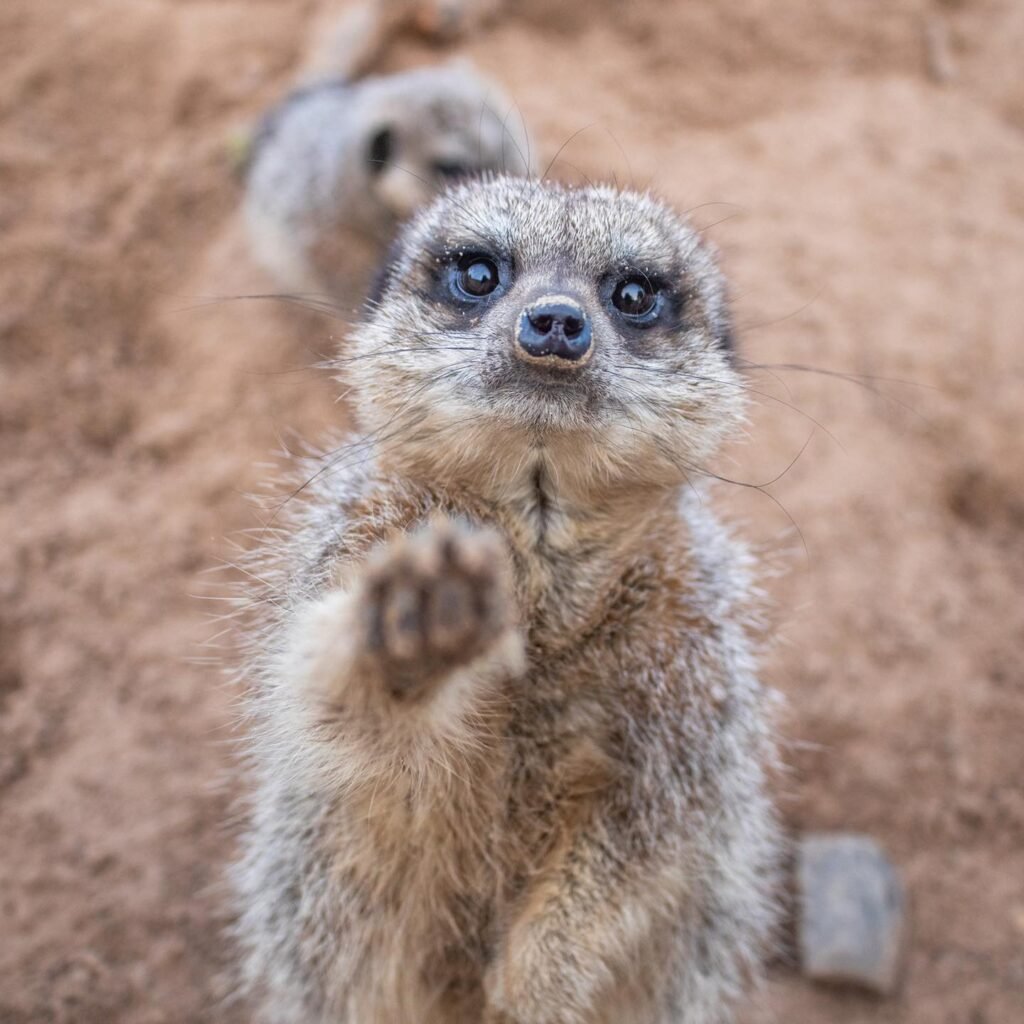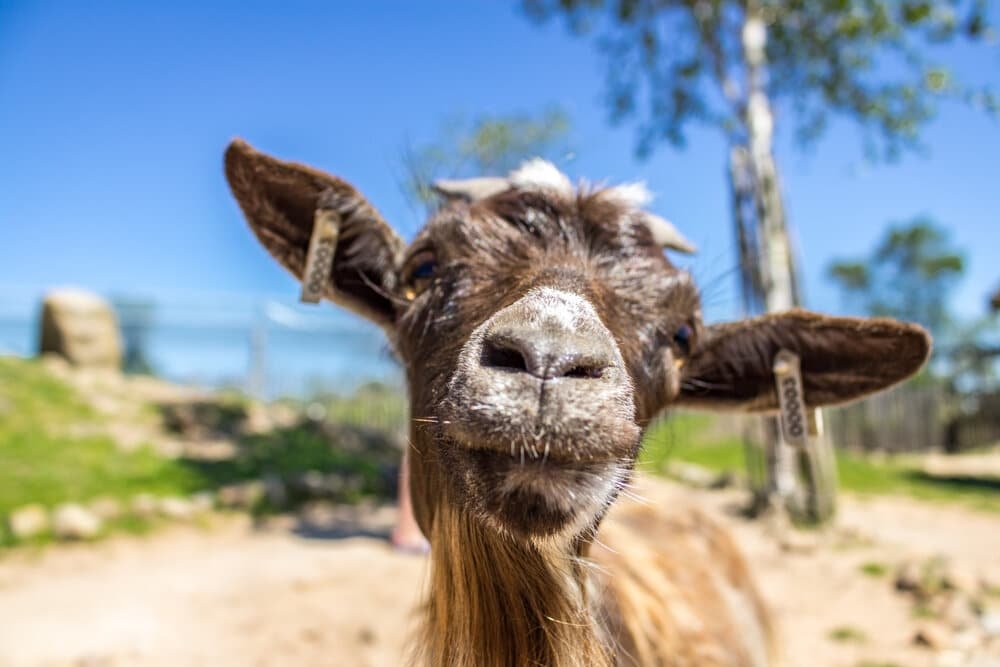
Visit Peak Wildlife Park’s African Village
Stumble across a forgotten Namibian outpost, with their African Village Walkthrough. Find Pygmy Goats foraging around the desert paths, while curious chickens scratch in the sun scorched sand. Their family of meerkats also call this arid environment their home; you can catch up with Layla, Lola and the rest of the gang just by the exit of the walkthrough.
African Pygmy Goat
Capra aegagrus hircus

Overview
The African Pygmy goat is a miniature goat, known for their amazing ability at being able to adapt to any climate. The breed was first developed in Africa from the West African Dwarf Goat and are very similar in appearance. They can now be found all over Europe, having been taken by the British during the colonial era. From Europe, some of the breeds were then exported to the US, where they gained great popularity.
The little breed with a BIG personality…
The breed is very docile in nature and they make the perfect pets, which is the primary use of the breed now! A very friendly, hardy and good-natured breed, at maturity females, weigh anything up to 34kgs, while billies weigh as much as 39kgs. A miniature breed, they never grow in excess of 58cms tall.
Reproduction
A prolific breeder, a nanny can bear up to four kids every 9 to 12months, while the gestation period is five months. Females reach sexual maturity at approximately 18months, though some have conceived as young as two months old! Males meanwhile are sexually mature as early as 9 weeks old! When born, kids will nurse straight away and can be weaned as early as ten weeks old!
The Meerkat
Suricata suricatta

Overview
What the Meerkat lacks in size it makes up for in personality. Standing at just 29cm and weighing as little as 620 grams the Meerkat in a small mongoose with buckets of charisma! Very social by nature, the meerkat will live in groups of up to fifty individuals, usually comprising of a dominant pair. These groups act as expert diggers, making hundreds of tunnels, some as deep as 1.5 metres!
Breeding
Within each group, the dominant male and female are the ones who usually breed successfully, though sometimes subordinate females will have young, and subordinate males may leave the group to find females from other groups. Once pregnant, the females carry the young for a gestation period of 11 weeks, after which between two and five young are born underground. Once the young reach four weeks of age they will leave the safety of their burrow and venture above ground. These young will be taught how to catch food and will be fed by ‘helper’ meerkats in order to ensure their survival.
Threats in the wild
A successful and industrious little critter, its ability to work as part of a team and it’s endearing nature mean that the Meerkat has no real threats in the wild and is currently classified as a species of least concern by the IUCN Red List










